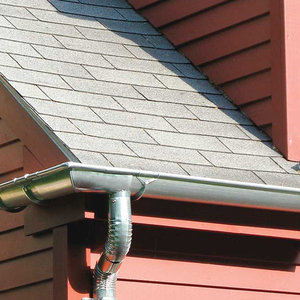I have a radon pump located behind the kneewall of a currently unfinished room. It makes a continuous whirring sound. Since I’m now planning to finish this room, I would like to quiet it down a bit. Moving the pump is not an easy proposition. My thought was to build a tight box around the pump, perhaps lined with sound deadening material. It would also need to be isolated from the house framing.
Any suggestions on what materials to use?
Any suggestions on how to attach the box to the house w/o transmitting noise? I though of something like panel adhesive, but I’m not sure how long this would survive the extremes of temperature in the space. I also thought about just having the box sit on the floor in the kneewall space on some kind of rubber bumpers.
All suggestions welcome!
Pete



















Replies
I design the installation of fans and blowers and other air movers and HVAC equipment in all sorts of places where noise is critical. The quitest equipment almost always has two or three things in common, and aside from a slow rotational speed, you can utilize these to quiet your radon pump. An insulated enclosure and suspension by means of vibration isolators (springs or rubber) are the most common ways to quite rotating equipment. Depending on the cooling requirements of the device, you can directly wrap some noisy equipment with something like 1/2" thick neoprene (works for a scroll compressor) or fiberglass insulation.
If I am right in assuming that this pump moves air, then it needs to have access to full airflow to move it. Right?
That means that the muffler system can't impede it without defeating the purpose of having it. No?
Excellence is its own reward!
One local man has an inverted Styrofoam ice chest, about $5 at local discount store, placed over both, one for each, his radon blower and sump pump. He keeps a brick on top to keep them in place and tightly sealed to the concrete slab. This expedient enclosure does quiet them to a remarkable degree. If it was my house I would have worked hard to find a less flammable substitute but for sheer effectiveness it proved, to me at least, the concept.
Maybe a cement board enclosure, weight and rigidity, covered inside with the same damping material that is used to stifle engines on custom cars and boats. Something around a 16"W by 16"D by 18"Tall , size to suit the job, bonded together with 4" fiberglass tape and epoxy. Some sort of closed cell foam tape as a seal on the bottom and a couple of wood blocks fastened through with bolts and fender washers as handles. Just an idea.
Yes, but. The radon pump is inline with a 3" PVC pipe that runs up from the basement slab, through the garage into the kneewall space of the room above the garage, and out a stack in the roof. The pump is located in the kneewall space. I was told by the installer that the pump is supposed to be located close to the outlet of the pipe.
The box would have to acommodate the inlet and outlet pipes of course.
As Tim says, isolation is the answer. Insulated the pipe inlet and outlet from the house framing by wrapping it with dense insulation like they use on refrigeration lines. I have had luck with setting snall motors on a cork/rubber blocks that I get from an HVAC supplier. Then you could build your box around it with rigid foam inside, or whatever material you feel will transmitt the least amount of noise.
Dave